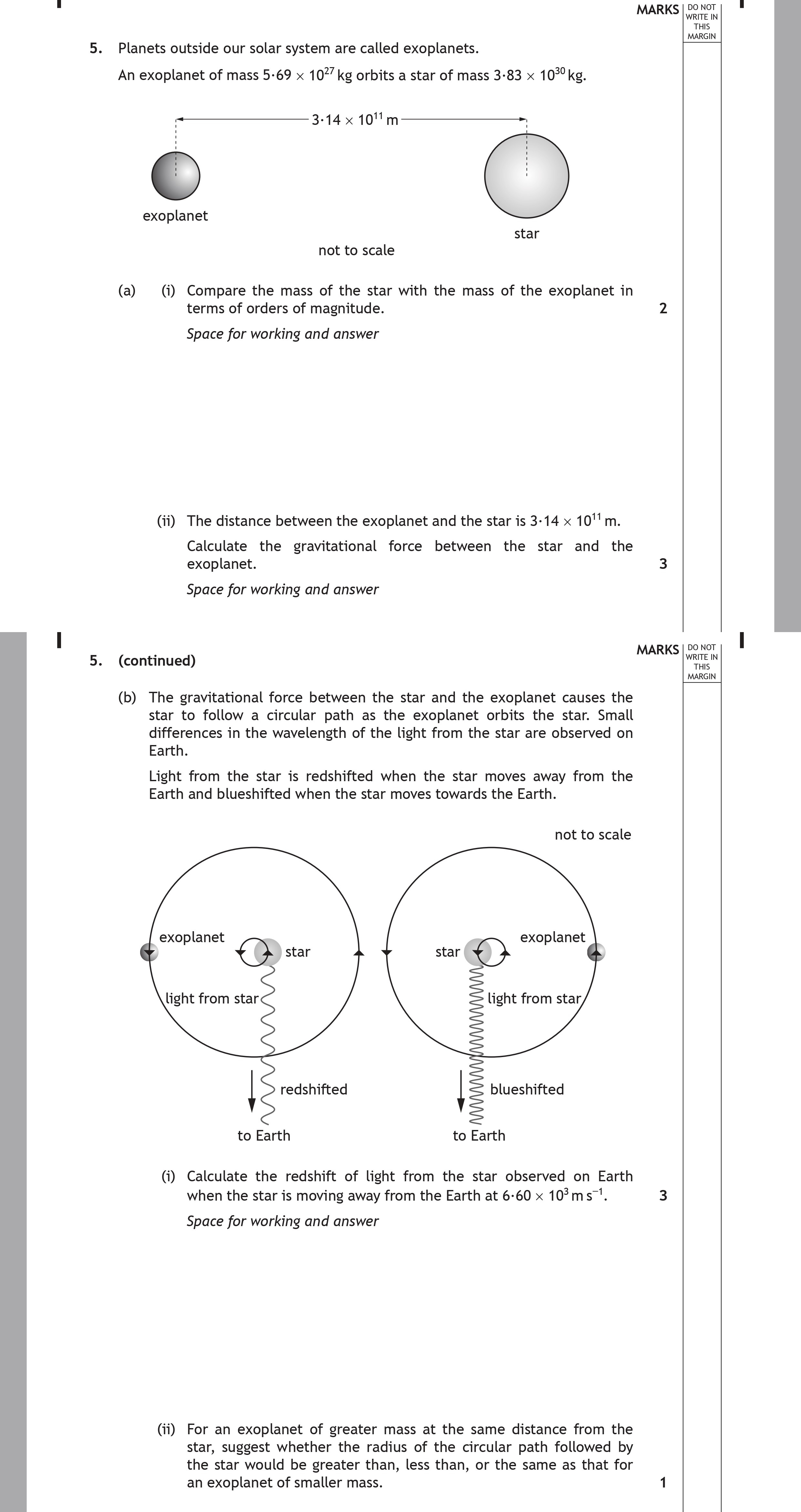Photo AI
Planets outside our solar system are called exoplanets - Scottish Highers Physics - Question 5 - 2017
Question 5

Planets outside our solar system are called exoplanets. An exoplanet of mass 5.69 × 10^27 kg orbits a star of mass 3.83 × 10^30 kg. (a) (i) Compare the mass of the ... show full transcript
Worked Solution & Example Answer:Planets outside our solar system are called exoplanets - Scottish Highers Physics - Question 5 - 2017
Step 1
Compare the mass of the star with the mass of the exoplanet in terms of orders of magnitude.
Answer
To compare the masses in terms of orders of magnitude, we first express both masses in powers of ten:
- Mass of the star:
- Mass of the exoplanet:
Next, we can analyze the orders of magnitude:
- The order of magnitude of the star is 30,
- The order of magnitude of the exoplanet is 27.
To find the difference in orders of magnitude:
This means the star's mass is approximately 3 orders of magnitude greater than that of the exoplanet.
Step 2
Calculate the gravitational force between the star and the exoplanet.
Answer
We apply Newton's law of universal gravitation, given by the formula:
Where:
- is the gravitational force,
- is the gravitational constant (),
- is the mass of the star (),
- is the mass of the exoplanet (),
- is the distance between them ().
Substituting in the values:
Calculating this gives:
Step 3
Calculate the redshift of light from the star observed on Earth when the star is moving away from the Earth at 6.60 × 10^-12 m s^-2.
Answer
The redshift () can be calculated using the equation:
Where:
- is the velocity of the star,
- is the speed of light ().
Given the acceleration of the star, we find its velocity over a unit of time (assuming it accelerates for 1 second):
Now substituting this into the redshift formula:
Step 4
For an exoplanet of greater mass at the same distance from the star, state how the redshift of the circular path followed by the star would be greater than, lesser than, or the same as for that exoplanet of smaller mass.
Answer
For an exoplanet of greater mass orbiting the star, the gravitational influence on the star increases. This leads to a greater centripetal force requirement for maintaining the orbital motion. Hence, the resultant velocities of the star due to the gravitational interactions will be affected.
Therefore, the redshift will be greater for the greater mass exoplanet as compared to a smaller mass exoplanet, resulting from the differences in gravitational influence on the star.
